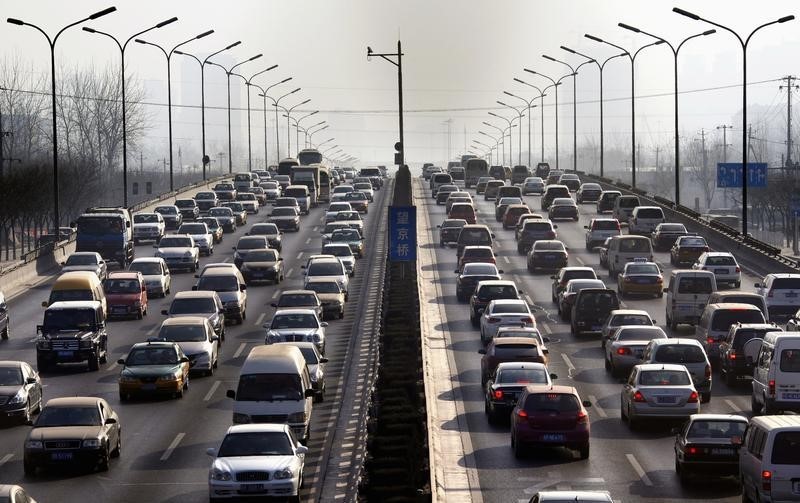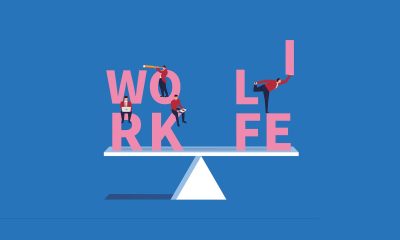Investing
China’s Clogged Roads Show Economic Recovery Gathering Pace

(Bloomberg) — China’s economic activity accelerated in February as many residents returned to work after an extended Lunar New Year break, clogging roads in major cities and spending more at restaurants and shops.
Congestion in major cities last week was the worst since at least the start of 2022, according to data compiled by BloombergNEF and Baidu (NASDAQ:). The number of people riding the subway in Beijing, Shanghai, Chongqing and other major cities was back to or above pre-pandemic levels.
UBS Group AG’s latest China consumer survey, released Tuesday, showed an increase in dining out, shopping in stores and offline entertainment.
Yet the rebound is proving to be lopsided. Sales of big-ticket items, like cars and homes continue to decline, reducing demand for commodities like steel, and exports are likely to slump further. That suggests China’s post-Covid recovery is being led by industries like retail and services, and the industrial sector will remain subdued.
“The property slump is the biggest hurdle for the cyclical recovery of China’s economy,” said Raymond Yeung, chief economist for Greater China at Australia & New Zealand Banking Group (OTC:) Ltd.
With consumption during the Lunar New Year holiday still only about 70% of the levels reached in 2019, there’s “a big gap to catch up,” he said. “It’s hard to expect a sharp rebound in consumption in the absence of a clear improvement in the job market,” he said.
Data Gaps
China unexpectedly dropped its Covid restrictions late last year and stopped reporting infection numbers, making it difficult to assess the impact of the outbreak. The National Bureau of Statistics also doesn’t publish official economic data in the first two months of each year because of distortions from the Lunar New Year holiday, which falls on a different day each year.
Analysts are increasingly turning to alternative indicators, such as mobility data to assess economic activity.
With many workers able to return to their hometowns for the first time in three years, travel over the 40 days of the Lunar New Year holiday was a bumper one. There were 1.6 billion trips made nationwide, 51% higher than last year but still 47% below the 2019 level, according to government data.
Last week, railway passenger traffic in the Yangtze River Delta, which includes Shanghai and economic powerhouses such as Jiangsu and Zhejiang, surged above pre-pandemic levels as university students returned to college, the government said.
Car Sales
On the production side, the picture is more subdued. Car output and sales both fell more than 30% in January from a year earlier, hit by longer than normal shutdowns of many production lines and dealership, as well as the end of subsidies for electric vehicles.
Read more: China Car Sales Drop Amid Weaker Buying Over Lunar New Year
The slump in the housing market also shows no sign of easing, with home sales by the top hundred developers falling about 33% last month.
That decline has hit demand for steel, cement and other goods. Steel output is flat this year while stockpiles have risen, according to data from the Iron and Steel Association. However, demand for some other commodities like oil and is starting to pick up.
Michelle Lam, Greater China economist at Societe Generale (OTC:) SA, expects the housing market to recover in the second quarter of the year as the policy support from the government and central bank since late last year starts to kick in.
That underpins her forecast of a 9.7% rebound in retail sales this year, which is well above both the 0.2% decline in 2022 and the median forecast for a 7.3% increase.
Trade Decline
Global trade is another dark cloud over the economy. Shanghai port, which is the world’s busiest container port, saw a 13% drop in containers processed last month. South Korea’s exports to China for the first 20 days of this month fell almost 23% after declining 31% in January.
Japan’s exports to China fell 17% last month, the worst decline since the same month in 2019, and reaching less than 1 trillion yen ($7.5 billion) for the first time since January 2020.
The slump in trade has continued to flow through to shipping costs, which are almost back to where they were before the pandemic.
Read the full article here

-

 Passive Income7 days ago
Passive Income7 days agoThe One Microsoft Design Tool Business Owners Shouldn’t Miss
-

 Side Hustles5 days ago
Side Hustles5 days agoThe DOJ Reportedly Wants Google to Sell Its Chrome Browser
-

 Side Hustles5 days ago
Side Hustles5 days agoHow to Create a Unique Value Proposition (With Tips & Examples)
-

 Investing4 days ago
Investing4 days agoAre You Missing These Hidden Warning Signs When Hiring?
-

 Investing6 days ago
Investing6 days agoThis Founder Turned a Hangover Cure into Millions
-

 Investing7 days ago
Investing7 days agoYour Firsthand Experiences Shape the Way You Run Your Business — Here’s How Mine Shaped Me
-

 Investing4 days ago
Investing4 days agoGoogle faces call from DuckDuckGo for new EU probes into tech rule compliance By Reuters
-

 Make Money4 days ago
Make Money4 days ago7 Common Things You Should Never Buy New


















